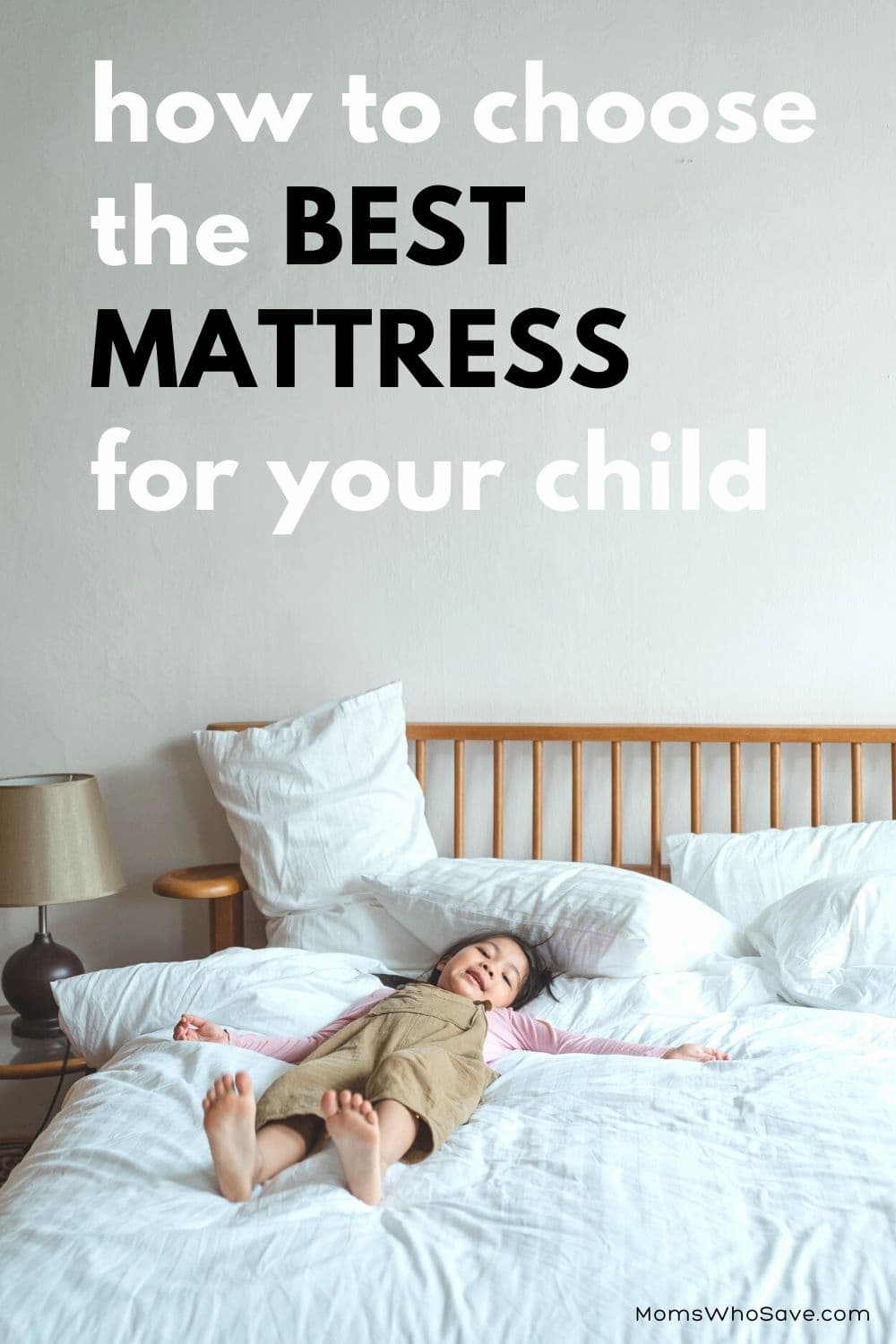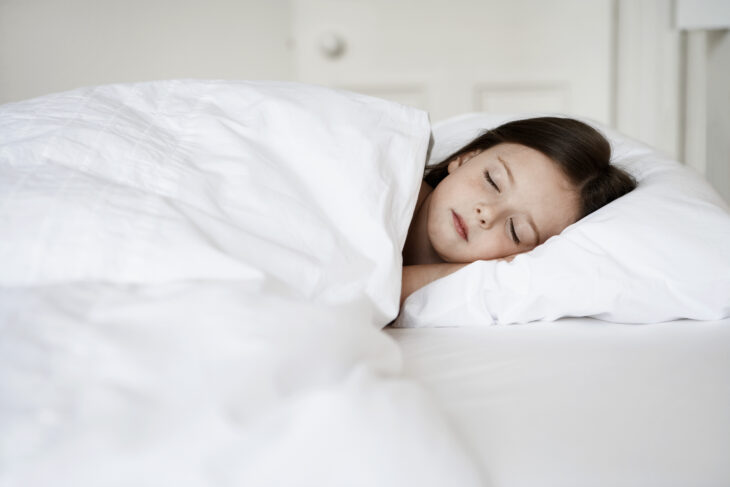Disclosure: Articles may contain affiliate links. As an Amazon Associate, we earn from qualifying purchases (at no additional cost to you). See our full disclosure here.
Last updated on November 6th, 2022 at 12:09 pm
We all want our children to grow up happy and healthy. To start them on the path toward a healthy life, kids need good nutrition, exercise, and healthy sleep habits. And, as you probably know, the right mattress makes all the difference in how well we sleep.
So how do you choose the best children’s mattress? Well, you need to think about the features of the mattress–just like you would if you were shopping for yourself, but there are a few extra considerations too.

How to Choose the Best Children’s Mattress
Choose the Correct Size Mattress
Most children will make the transition from a crib to a “big” bed around two or three years old. Some people opt for a toddler bed (which uses a crib-size mattress), but if you want to save money, think longer-term. Your little one can go from a crib to a kids’ twin mattress, twin XL, or a full-size mattress. The size you choose will depend on a few factors.
If the bedroom is on the small side, you might want to choose a twin bed. And, if you have two children sharing a room, two twin beds will probably work best.
Some people prefer a twin XL mattress, which is a bit longer than a regular twin-size mattress, so it will accomodate your child well into their teen years.
If you have the space, a full-size mattress is a great choice and will be large enough for your child as they get older.
Select the Right Mattress Type
Next, you need to choose the right construction and support type. Sometimes it’s just a matter of personal preference, so let’s walk through the most common options.
Traditional innerspring coil mattresses
This is what most of us probably grew up with. This type of mattress has that bouncy feel that you’re most likely familiar with. Interconnected coils are durable and provide good support, but you can also buy “pocketed” coils. Pocketed coils have springs that are independent from each other, which reduces the transfer of motion–for example when someone else in the bed moves.
Memory foam mattresses
Memory foam mattresses are popular because they conform to the shape of the body and provide motion isolation. Memory foam mattresses can trap and absorb heat, however. If this is a concern, look for designs featuring gel infusions that will help your child stay cooler.
Hybrid mattresses
Hybrid mattresses combine coils or springs with a top layer of foam. These mattresses are popular because they offer the best features of an innerspring mattress and a memory foam mattress.
Latex mattresses
Latex mattresses are high quality, but are expensive. Latex is an all-natural material, so if you’re set on an eco-friendly mattress, latex could be right for you–if you’re willing to spend the money. Latex also has a natural softness and breathability, and it holds up well over time. For many people though, the cost is just not practical for a child’s mattress, since they will likely move on to a larger bed before too long.

Choose the Right Materials
If your child suffers from allergies or asthma, you may want to look for a mattress made with natural materials, like cotton or bamboo. Read the labels and look at the manufacturer’s website to see what the mattress is made of. Some mattresses are specifically marketed to allergy sufferers. You can also buy a mattress cover if your child has allergies.
Decide on a budget
Mattresses for children come in a wide variety of price points. You’ll need to strike a balance between cost and quality. It’s best to choose a mattress that will be comfortable, yet supportive for several years.
You also might want to think ahead to when your child grows out of their bed. Will you want to reuse the mattress for a younger sibling or in a guest room? If so, you may want to consider spending a little more to get a higher quality product that will last longer.
Don’t Forget the Foundation
A simple platform foundation works fine for a child’s bed, and they are inexpensive. This type of foundation saves money versus a box spring. However, many high quality mattresses have matching box springs, and you can purchase the two pieces as a set.
Now that you have the basics when it comes to choosing the best children’s mattress, you can be confident in your buying decision.
Also read:
Tips for Reading Aloud to Your Kids
6 Tips to Teach Your Kids Healthy Sleep Habits
Raising Good Eaters — Helping Your Kids Grow up to Enjoy a Variety of Healthy Foods
Leave a Reply